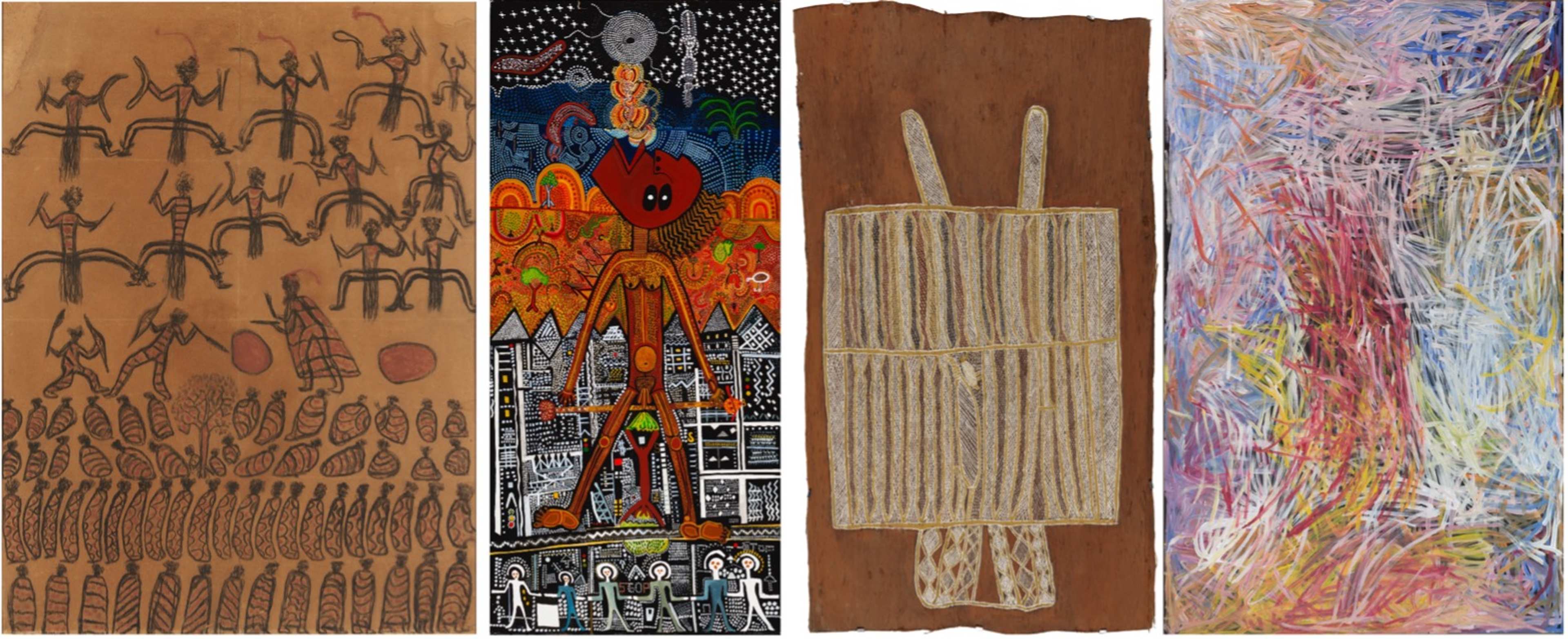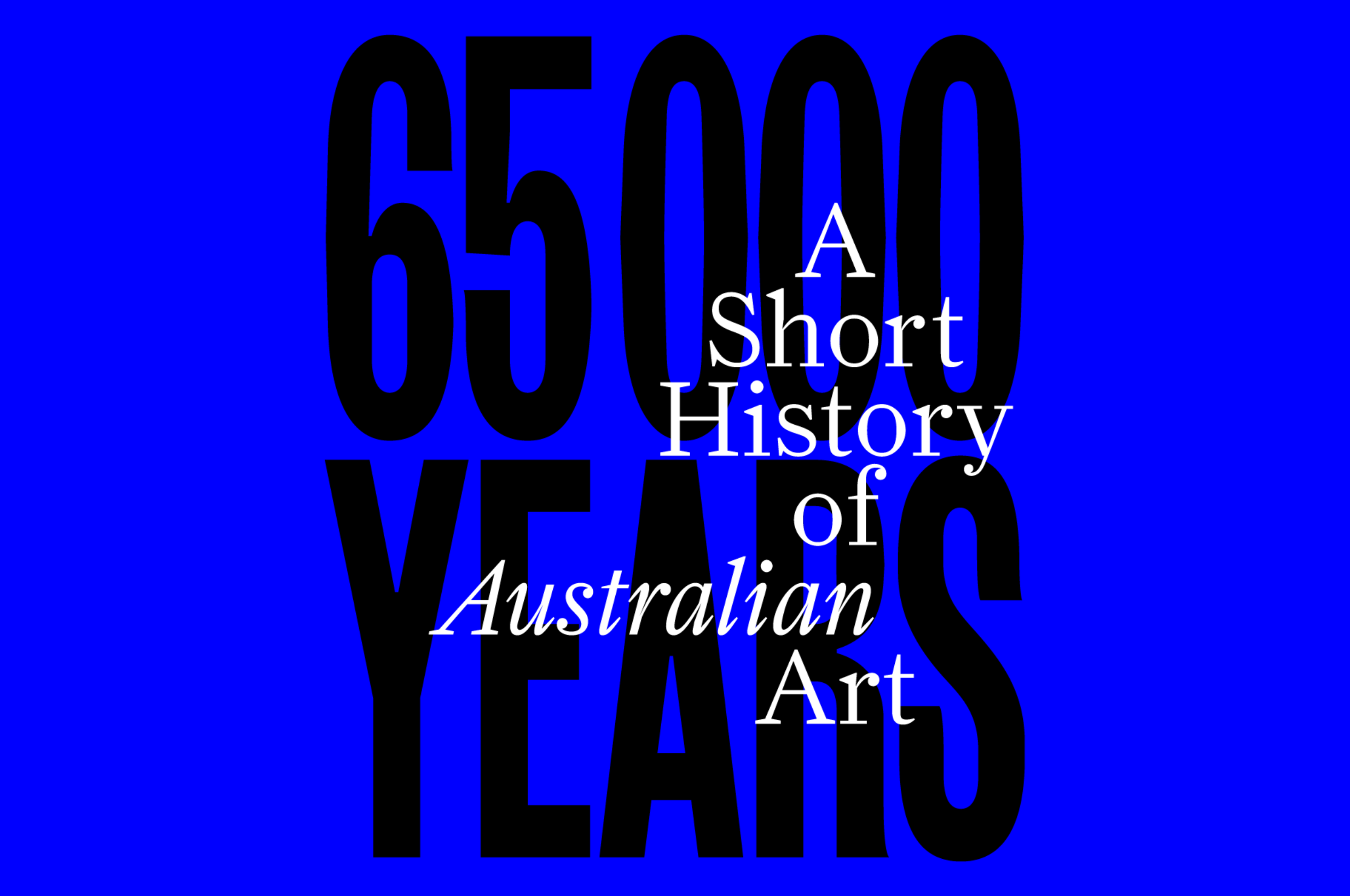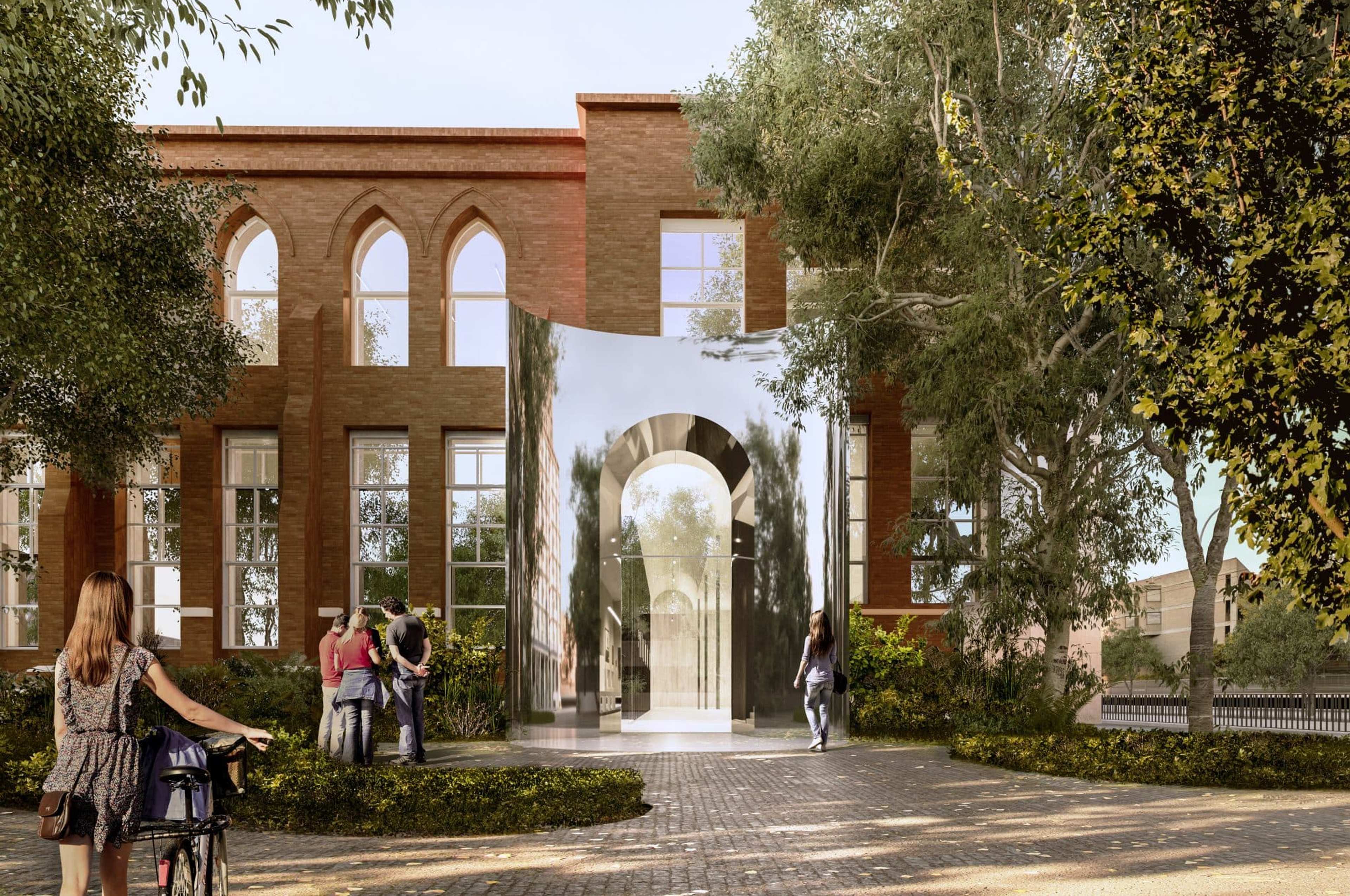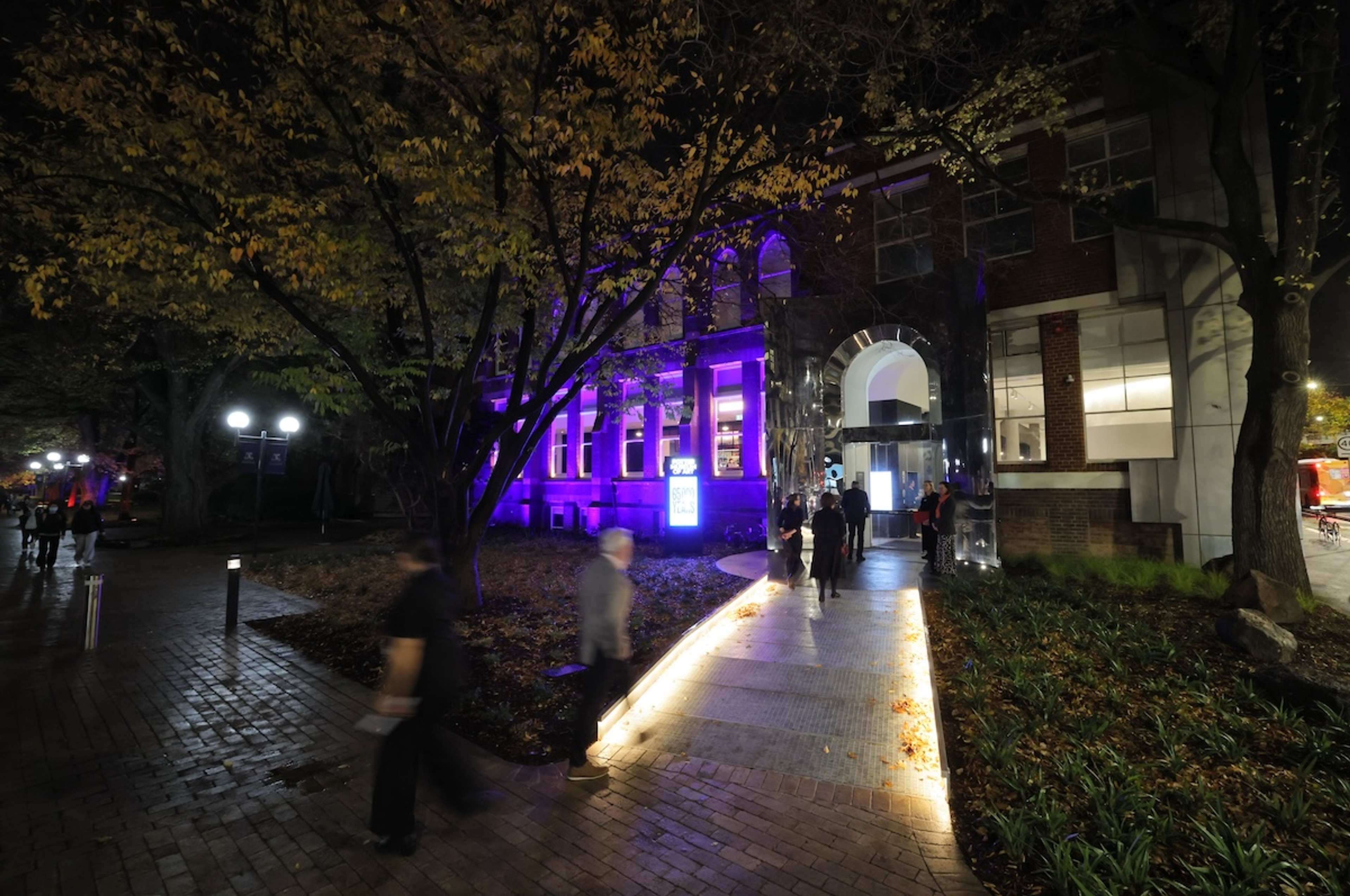Artists and commissions announced
The Potter Museum of Art announces artists and new commissions for 65,000 Years: A Short History of Australian Art exhibition opening 30 May 2025.

The Potter Museum of Art, the flagship art museum of the University of Melbourne, has today announced the full list of artists and details of the six new commissions for its re-opening exhibition, 65,000 Years: A Short History of Australian Art.
The exhibition will open at the revitalised Museum during Reconciliation Week on 30 May 2025 and run until 23 November 2025.
65,000 Years: A Short History of Australian Art celebrates the brilliance and beauty of Aboriginal and Torres Strait Islander art while confronting the dark heart of Australia’s colonial history.
Curated by Associate Provost and Distinguished Professor Marcia Langton AO, Senior Curator Judith Ryan AM, and Associate Curator Shanysa McConville—in consultation with Aboriginal and Torres Strait Islander artists and custodians of art traditions—the exhibition explores the recognition of Indigenous art and its rise to prominence globally.
The enduring significance of Indigenous cultural and design traditions, knowledge, and agency is revealed in the spectacular curation of over 400 works.
65,000 Years: A Short History of Australian Art includes rarely seen works of art and cultural objects from the University of Melbourne’s collections alongside 193 important loans from 77 public and private lenders.
The exhibition includes work by groundbreaking artists such as William Barak, Lin Onus, Yvonne Koolmatrie, Albert Namatjira, Johnny Warangkula Tjupurrula, Emily Kam Kngwarray, Trevor Nickolls, Destiny Deacon, Yhonnie Scarce, Rover Thomas, Noŋgirrŋa Marawili, Woŋgu Munuŋgurr, Minimini Numalkiyiya Mamarika, Ricky Maynard and Julie Gough.
Professor Marcia Langton said: “The ironic title of this exhibition refers to the belated and reluctant acceptance of Aboriginal and Torres Strait Islander art into the fine art canon by Australian curators, collectors, art critics and historians in the last quarter of the 20th century.”
“65,000 Years: A Short History of Australian Art celebrates Indigenous art as it is increasingly recognised in galleries and collections around the world – as the greatest single revolution in Australian art.”
Six new commissions by leading contemporary Indigenous artists will be unveiled. They are:
- Kooma new media artist Brett Leavy’s Virtual Narrm 1834, 2025, will transport audiences into the lands and waterways of the Wurundjeri people as they were in 1834, to foster a deeper appreciation for the environmental stewardship and cultural resilience that are hallmarks of Wurundjeri Woi-Wurrung society. The latest in his Virtual Songlines project, this photo-realistic animation is created in collaboration with Wurundjeri elders.
- Trawlwoolway artist Julie Gough exposes the prolific Western reproduction and institutional collecting of plaster busts of Nununi leaders Wurati and Trukanini, first modelled by artist Benjamin Law in Nipaluna (Hobart) in 1834-1835. Gough will display the casts in their Medical History Museum storage crates, accompanied by a new video response to the unknowable numbers of these representations of ancestors from Lutruwita distributed across the globe, which by extension refers to all ancestors and their cultural markings taken and dispersed globally by colonists.
- Respected Aṉangu ngangkari (traditional healers) based at Indulkana, South Australia in the APY Lands, Betty Muffler and Maringka Burton collaborated to create Ngangkari Ngura (Healing Country), 2022. The 5-metre-long painting celebrates the ngura (country) specific to each artist, referencing the artists' healing powers and how they care for Aṉangu and the sentient land. It focuses on healing the country and Aṉangu in the aftermath of British atomic testing at Maralinga and Emu Field during the 1950s.
- Lorraine Connelly-Northey, well known for her dramatic sculptural works that make use of discarded post-industrial materials, has created three freestanding monumental narrbong (bush bags). Connelly-Northey’s works resonate with cultural and political meaning, and reflect her experience growing up in Swan Hill, Wadi Wadi and Wamba Wamba terrain, south of her mother’s Waradgerie country, disconnected from mainsprings of culture, language and ceremony through colonisation.
- Dhauwurd Wurrung Gunditjmara artist Sandra Aitken’s large Gnarraban (eel trap) embodies a fish trapping system used by her kin for thousands of years. Aitken learned to weave from the renowned weaver, her aunt, Connie Hart, who revived the important women’s practice of basket weaving that was almost lost due to European colonisation of Victoria from the early 1800s.
- The work of Senior Trawlwoolway artist Vicki West from north-east coast Lutruwita is represented by bull kelp water carriers and woven river reed and white iris baskets, honouring forms and processes of her ancestors, as well as speaking to the survival of traditions. West was introduced to customary processes of weaving and of working with kalikina (bull kelp) at a cultural workshop in the early 1990s and has since become the premier Australian practitioner of kelp, a precious cultural resource.
Professor Emma Johnston AO Vice-Chancellor at the University of Melbourne said: “As this exhibition, 65,000 Years: A Short History of Australian Art will show, since the nineteenth century the University has amassed an extraordinary collection of Aboriginal and Torres Strait Islander art.
“While many of the artworks shine with the cultural richness of the first peoples, there are also works that engage us in truth-telling and profoundly challenge the legacy of the University’s collections and academic practices.
“Alongside Vol 1 of Dhoombak Goobgoowana: A History of Indigenous Australia, this exhibition is an important exercise in truth-telling for the University, including histories of scientific racism, and the collecting of ancestral remains. It will provide a vital platform for Indigenous storytelling and encourage dialogue about the importance of Indigenous culture, history and art for the nation as well as the University community.”
Curators Judith Ryan and Shanysa McConville said: “This exhibition bears testament to 65,000 years of knowledge. It encompasses an extraordinary range of artists and works of art that serve as a conceptual map, illustrating our contested shared history and introducing us to some of the Indigenous architects of change. By revealing key moments and turning points in the history of Indigenous art in Australia, we explore diverse art traditions across communities and regions, art forms that emerged post-colonisation, and artistic resistance and innovation.”
Director of Potter Museum of Art Charlotte Day, said “The Potter is uniquely positioned to realise such an exhibition at an important time in Australia’s history.”
“Since 1853, the University has collected works of art, cultural objects and records that form a profoundly important archive, and for the first time these Indigenous collections will be exhibited together and interpreted by authoritative Indigenous scholars and other leading experts.”
The Museum has undergone extensive redevelopment by Wood Marsh Architects and features an impressive new entrance on the University’s campus, along with new and improved spaces for the Museum’s leading collection-based learning programs made possible by the generous support of The Ian Potter Foundation and Lady Primrose Potter AC.
Mr Peter Jopling AM KC said: “The Potter Museum of Art was established in 1972 at the University of Melbourne, and for over 50 years it has played a significant role in the cultural life of Melbourne, exhibiting contemporary art alongside the University’s collections. We are delighted to welcome visitors back into our revitalised museum and to chart a new, bold, and thought-provoking environment for visitors to interact with and enjoy and explore art.”
The exhibition is made possible by the generosity of Principal Supporters Peter McMullin AM and Ruth McMullin, Leadership Supporters Peter Jopling AM KC, Chairman of the Potter Museum of Art, the Erica Foundation, Creative Australia and Creative Victoria, Foundational Supporters Andy and Rainie Zhang and the Naomi Milgrom Foundation, and Supporters Judith and Leon Gorr, Rebecca Hossack, John and Susan Wardle, Her Honour Irene Lawson and Brendan Kissane KC. The Gordon Darling Foundation is Publication Partner.
Running alongside the exhibition is a significant new educational initiative that will create resources for both school and tertiary students and teachers to build a deeper understanding of Indigenous art, history and culture. These curriculum focused resources will continue to be available beyond the life of the exhibition. The initiative is developed in partnership with the University of Melbourne’s signature Ngarrngga Project which builds innovative curriculum resources in collaboration with Indigenous Knowledge Experts. Ngarrngga is led by Professor Melitta Hogarth, Director and Associate Dean (Indigenous) in the Faculty of Education, in conjunction with Distinguished Professor Marcia Langton AO, Professor Aaron Corn, Director of the Indigenous Knowledge Institute, and Professor Jim Watterston, Dean of the Faculty of Education.
The University of Melbourne with Thames & Hudson has released a comprehensive publication also titled 65,000 Years: A Short History of Australian Art. Featuring new writing by 25 leading thinkers across generations and disciplines, this publication further examines the history of Indigenous art across time and space. It is edited by Distinguished Professor Marcia Langton and Senior Curator Judith Ryan.
Located at The Potter, an all-new custom destination restaurant, Residence, will open in winter 2025. Co-founded by leaders in hospitality Nathen Doyle (Sunhands, Heartattack and Vine, Wide Open Road) and Cameron Earl (Carlton Wine Room, Embla, ST. Ali), Residence will serve as a daytime to evening restaurant, and centres upon an annual ‘Chef in Residence’ format that uniquely offers chefs the opportunity to realise their restaurant ambitions from conception to reality.
MEDIA CONTACTS
To request interviews, further information or imagery please contact:
Jasmine Hersee, jasmine@articulatepr.com.au, 0451 087 196
Claire Martin, claire@articulatepr.com.au, 0414 437 588
Further details about the program will be announced in early 2025.
Image captions: William Barak (Wurundjeri, c. 1824–1903), Ceremony c. 1885, earth pigments and charcoal on paper, 104.9 × 84.5 cm. Royal Historical Society of Victoria, Melbourne; Trevor Nickolls (Ngarrindjeri, 1949–2012), Tightrope walking 1979–80, oil on canvas, 198.5 × 91 cm. The University of Melbourne Art Collection, VCA Collection; Mundukul Marawili (Mad-arrpa clan, Yirritja moiety, c. 1890–1950), Mundukul ga yiwarra (Ancestral snake and fish trap at Baraltja) 1942, earth pigments on Stringybark, 177 × 100 cm. The Donald Thomson Collection, part of the Indigenous Art and Culture Collection, the University of Melbourne. Gift of Mrs Dorita Thomson, 1973; Emily Kam Kngwarray (Anmatyerr, c. 1914–1996), Wild Yam 5, 1995, synthetic polymer paint on linen 200 × 150 cm. Hassall Collection, Gadigal Nura, Sydney.



